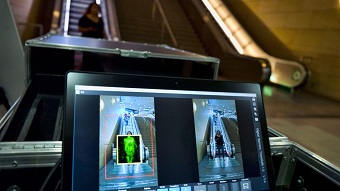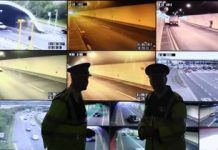The Los Angeles metro will roll out body scanners in its subway stations, according to reports. It will use scanners from the British security company ThruVision, capable of scanning upwards of 2,000 people per hour. Los Angeles is the first city in the US to employ body scanning security.
The scanners will monitor visitors for concealed weapons — both metal and non-metal capable of causing “mass casualties.” They’re not “necessarily” looking for smaller weapons. Instead, they are trying to identify things like suicide vests or assault weapons.
The ThruVision scanners are not like individual airport scanners, which require forming a line and going through one by one. Instead, they survey a moving crowd as a whole. In other words, they shouldn’t cause a backup similar to the nightmare that is the TSA airport experience.
The Los Angeles metro serves around 360,000 riders on an average weekday, according to its most recent statistics. That’s a blip in comparison to New York’s 5.5 million daily weekday average. But L.A.’s metro and lightrail transportation options are expanding (if not rapidly). Construction on the purple line, which connects downtown Los Angeles with the Westside, is underway. And metro ridership has seen a 3.6 percent increase over 5 years, mostly thanks to the expansion of the Expo Line from downtown to Santa Monica. However, that modest increase doesn’t tell the whole story.
According to reports subway ridership on two of the biggest lines is down 25 percent, and use of mass transit overall (which includes buses) has decreased 15 percent over five years. A big concern is reportedly safety. So the body scanners could be a way to help increase riders’ feeling of security, thereby increasing ridership. The scanning is totally voluntary. Except, of course, you won’t be able to ride the subway without submitting to a scan. Which is another way of saying that the scanning is mandatory. So while the scanning may attract more people who are worried about safety on mass transit, it could turn off just as many who don’t care to have their morning commute accompanied with a side of surveillance







